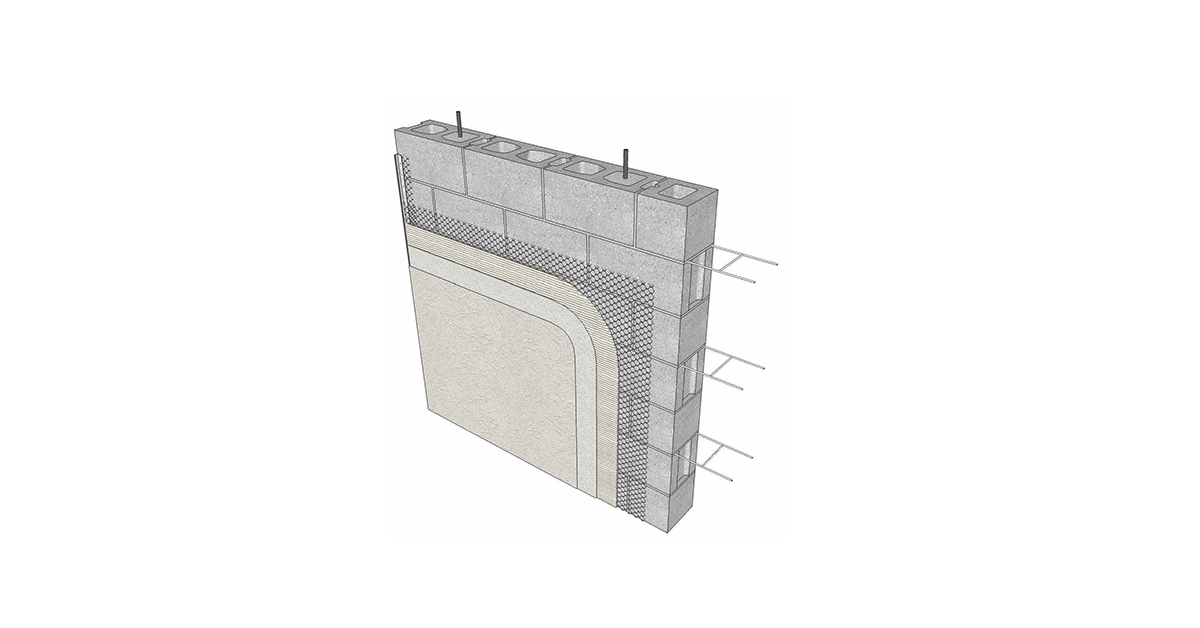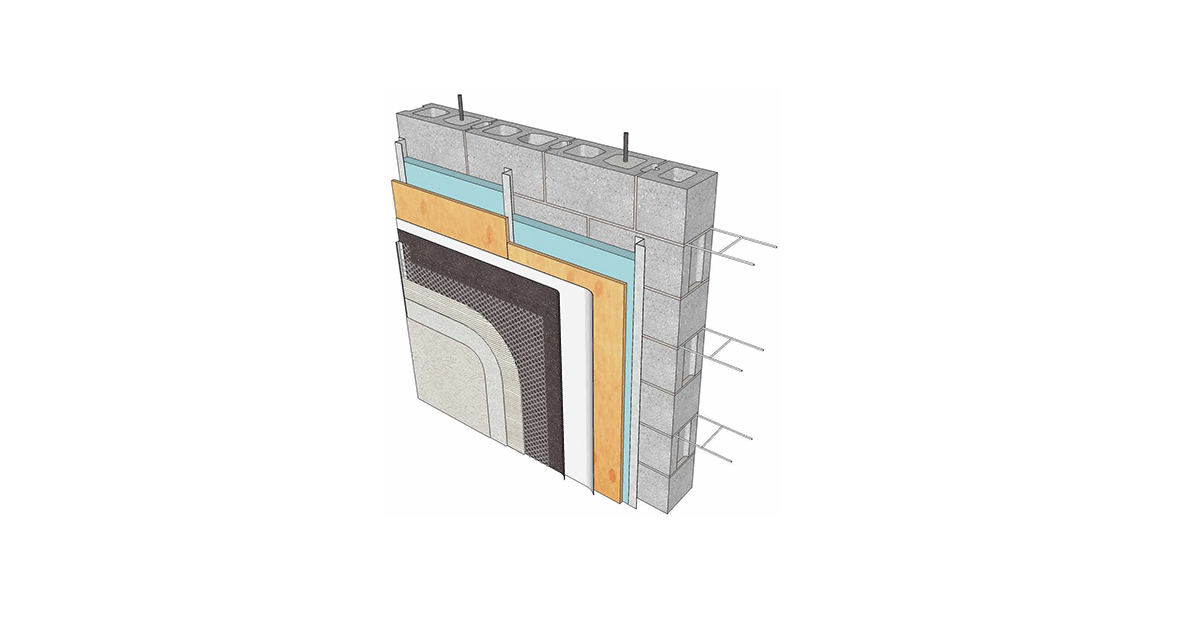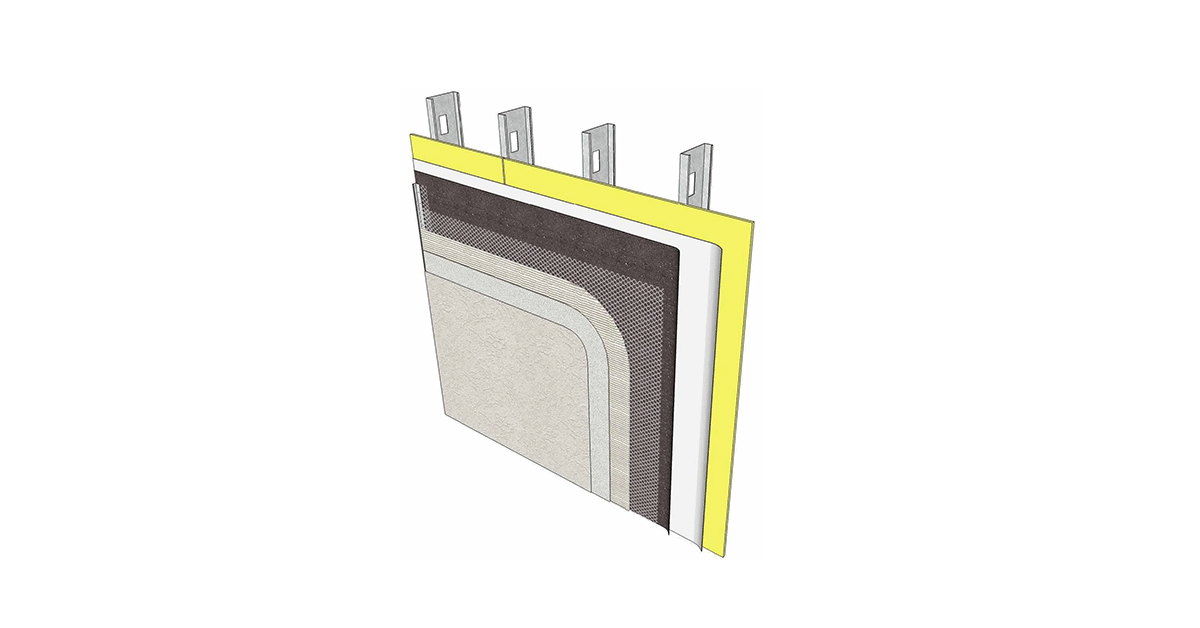Stucco Replacement
If damage to the stucco system is past the level of repair, then removal and reinstallation of a new system may be required. You can refer to our new construction stucco page for preliminary guidance.
Stucco Section Repair
Damaged stucco often exhibits cracking, spalling, and delamination. Root cause of damage can vary from steel mesh/lath corrosion, freezing-thawing, lack of bond, or intrinsic issues with the mix or construction. Investigations for stucco projects can be complex, but critical for determining the appropriate repairs. Repairs in general remove unsound material, prepare the substrate, add new lath, add new flashing or weather barrier sheeting, and replace stucco section(s) with a compatible repair mix. New lath, barriers, and flashings should be integrated appropriately with the existing systems.
The overarching goal of stucco repair mix is to develop a repair mix that has similar properties of strength, density, porosity, and water absorption to the existing stucco. If the repair mix is too strong and dense in a stucco system with weaker, more porous stucco, it can cause premature future failures of the historic or existing stucco. As new layers/coats of the stucco system are installed, they need to be cut into the existing stucco so that each succeeding layer is cut into the existing stucco at increasing amounts. In other words, the scratch coat is cut in, then the brown coat has a slightly larger area cut in, and the finish coat spans the largest in area.
Stucco Crack Repair
Crack repair options depend on whether the crack is moving or stable, its width, and if it’s causing water infiltration. If still moving, as determined with a crack gauge, then a flexible material like sealant may be an appropriate solution. Fine sand can be broadcast into the sealant to assist with matching the crack repair to the remaining main field of stucco. If the crack is no longer moving, then a more rigid repair material, like a repair mortar, may be appropriate. Mortar repairs should be formulated and installed to match the exterior of the existing stucco.
Coatings are sometimes applied to stucco as added protection from the environment and for aesthetics. Vertical surface coatings can range from acrylic, polyurethane, mineral silicate, silane/siloxane, and cementitious. If a new film-forming coating or water repellent is added, it may assist in reducing water absorption, but it can also inhibit the stucco system from breathing and drying when moisture infiltrates the system. Approach coating projects with caution.
For any stucco recoating project, an investigation is needed to understand the condition of the existing coating and how well it’s bonded to the substrate. This is performed by pull-off testing. The type of coating must also be known so that the new selected coating system is compatible to the chemistry of the existing coating to ensure adhesion and durability are not compromised. Mockups and pull-off testing are recommended as well as quality assessment during the project.
Stucco clad facade maintenance should focus on limiting water infiltration, protecting horizontal facing surfaces, replacing sealant joints at appropriate intervals, keeping surfaces clean of features that trap moisture, maintaining coating systems if applicable, and conducting compatible spall and crack repairs as needed.
For repair and restoration projects, it’s important to understand the properties of the existing stucco, composition, layers, and condition prior to selecting new repair materials. The following field and laboratory testing may be needed for stucco facade evaluation.
FIELD TESTING:
LABORATORY TESTING:
- Compressive Strength, Density, Porosity
| | |



